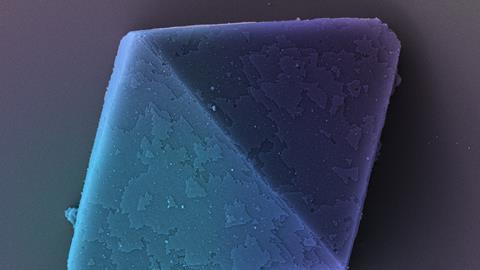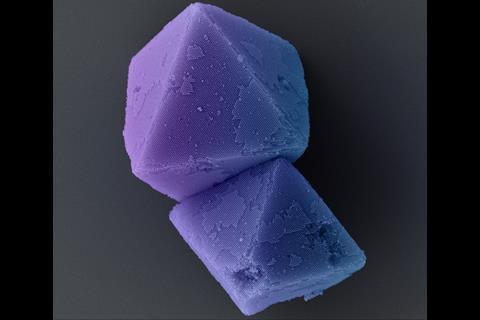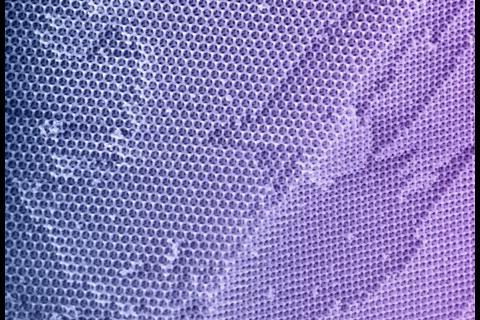You can create extraordinary photonic crystals out of ‘tetrapods’ using DNA origami with unprecedented precision.
You wouldn’t know it, but these neatly ordered, sharp crystals are made of DNA. They are the product of a powerful piece of DNA origami, in which DNA is used as a building block to design and ‘program’ specific building blocks to self-assemble and gradually form well-defined colloidal structures on a microscopic scale.
In Science, Gregor Posnjak and colleagues from Ludwig Maximilian University in Munich describe their tetrapod, in which each limb consists of double-stranded DNA with a ‘foot’ of single-stranded DNA at the end. The single-stranded sequences hybridise with those of another tetrapod, forming neat lattices of ordered tetrapods with a periodicity of 170 nm, which then form larger crystals.
The lattices resemble the structure of diamonds, in which carbon has a hexagonal arrangement with relatively large open spaces between carbon atoms. It was these open spaces, which are energetically unfavourable, that posed the greatest challenge to the researchers who wanted to produce these so-called cubic diamond lattices. This structure is in demand because of its special photonic properties, but until now it has been difficult to produce well-defined lattices and crystals at the right length scale.
According to an accompanying perspective, Posnjak et al’s approach offers “an unprecedented level of control and programmability to allow DNA molecules to assemble into colloidal structures across different length scales”.
















Nog geen opmerkingen